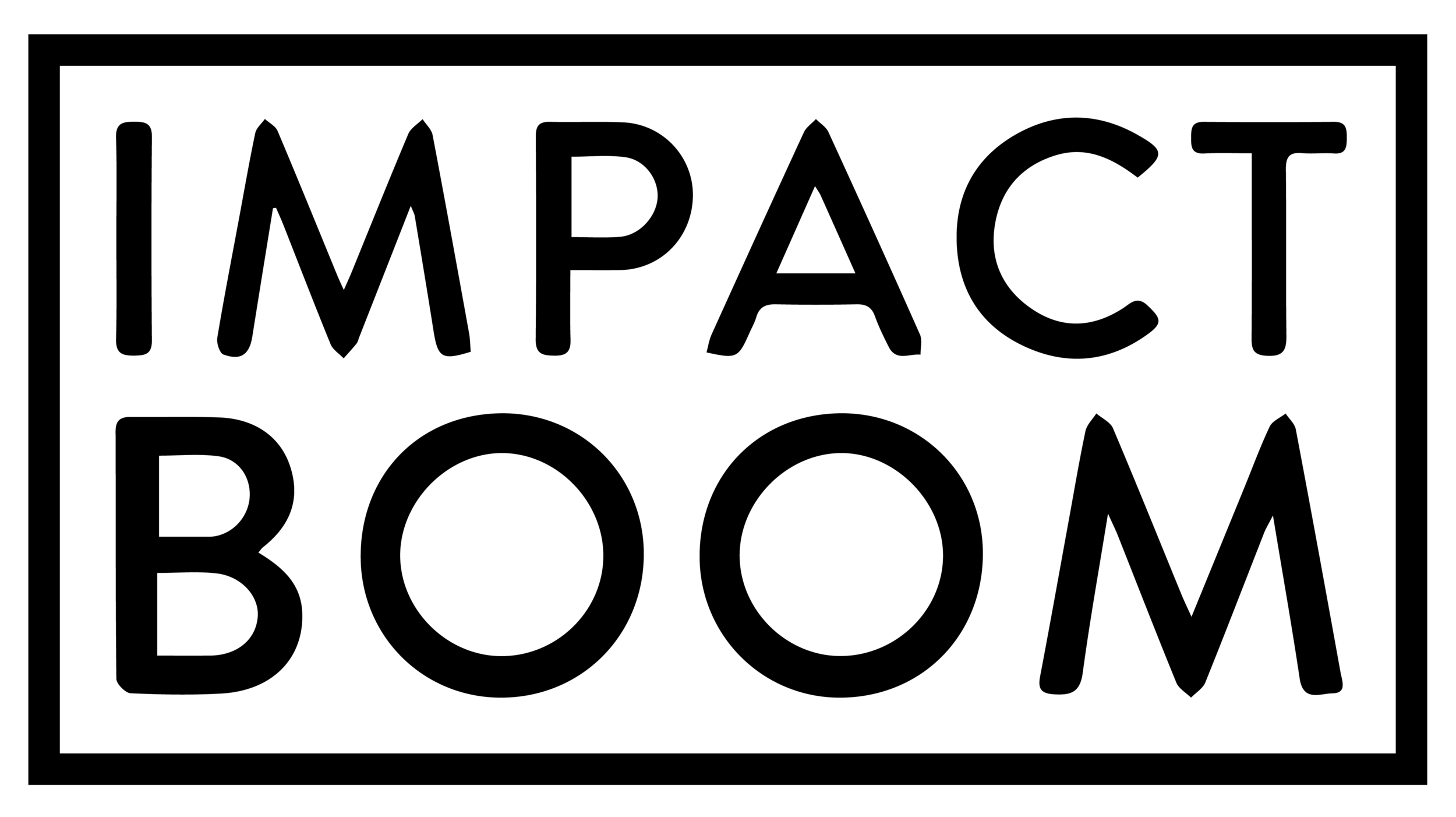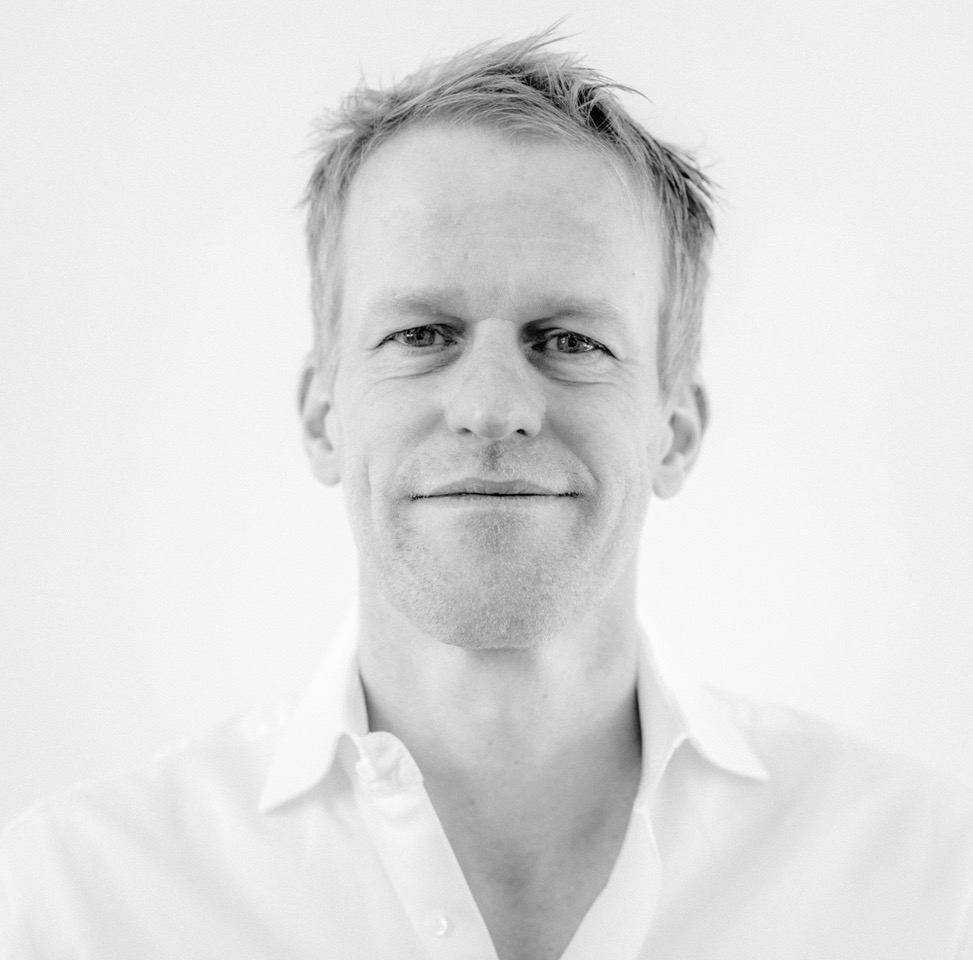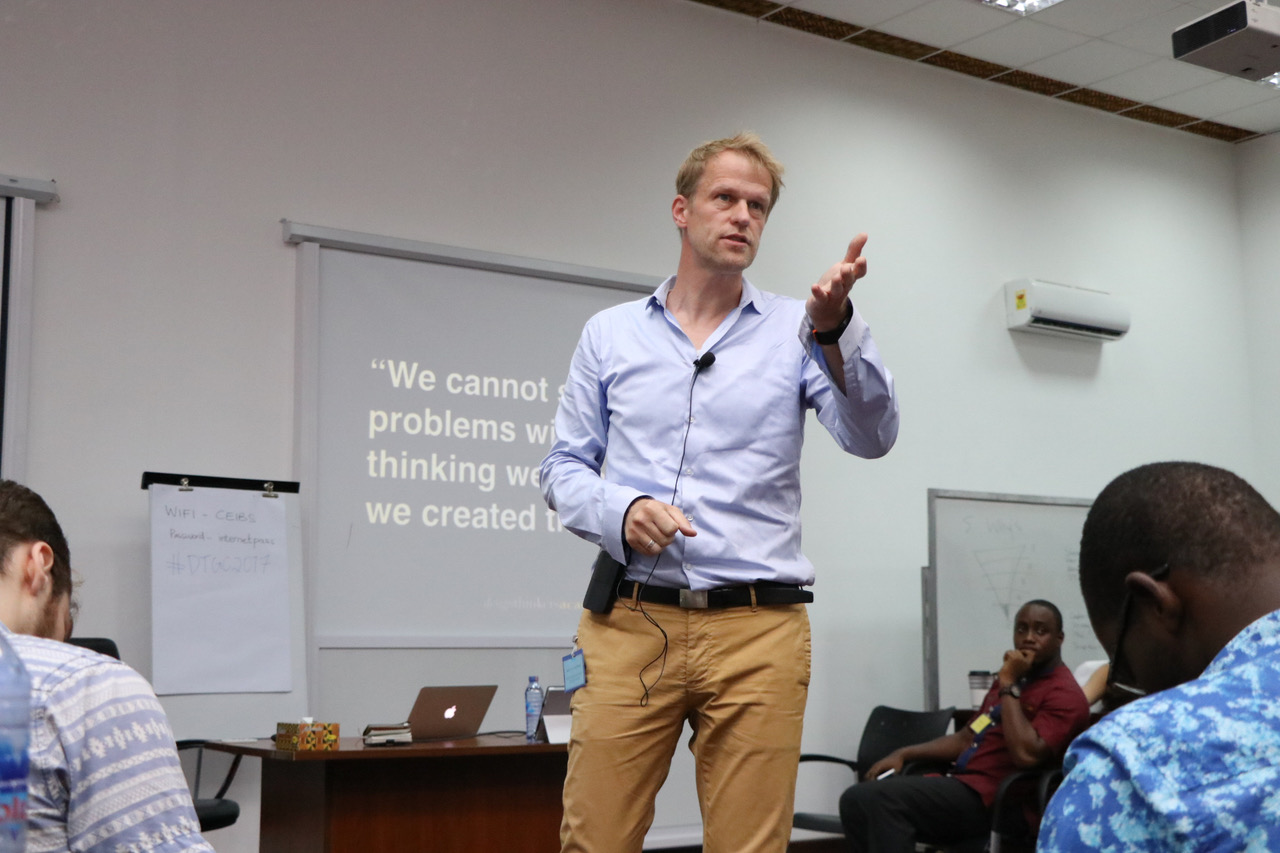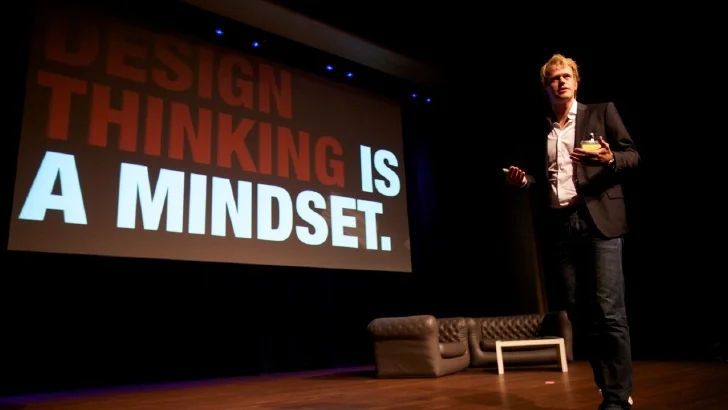Arne van Oosterom On The Meaning Of Design Thinking, Purpose & The Art Of Innovation
Arne van Oosterom is Senior Partner and Founder at DesignThinkers Group and Founder and Facilitator at DesignThinkers Academy.
Design Thinkers Group is a Global Agency, represented in 18 countries who train, develop and facilitate creative multidisciplinary teams and communities to drive positive change.
Arne also co-authored This is Service Design Design Thinking and featured on the Design the New Business documentary.
Arne discusses the challenges of design-led innovation when tackling problems, he shares lateral thinking tips, talks about empathy and explains and why design thinking is a mindset.
Highlights from the interview (listen to the podcast for full details)
[Tom Allen] - Could you please share a bit about your background and what led you into the world of design thinking? [2:01]
[Arne van Oosterom] - I come from a very creative family of artists and designers so it was always in the stars that I was going to be doing something creative. But I'm also dyslexic and stubborn so I didn't want my school to know that I had dyslexia and I didn't really have a good relationship with them. It led me to really disliking school. I studied at many schools and universities but I never finished any of them. I love learning but I never really fitted into any of these systems; I felt like I had to rebel against them. From then on, I've done a range of things like being a photographer, an artist, musician, doing theatre, but also working for a telco and communications. Before DesignThinkers Group and Academy I was the Creative Director at a communication design agency, but at the same time I was doing stand up comedy!
Although my parents were really worried about me, when people ask, 'when did you become interested in design thinking?', I think I've been doing that all the time and it's nothing new. I say that I was there the whole time and the world sort of changed towards me; all of a sudden it was hip and happening to not fit in! I wasn't fitting in my whole life!
Design thinking to me was a liberation. It was saying, 'you can be all those things and you can use all those levers. You can be multidimensional as a person. You don't have to fit into the box.'
Please tell us more about DesignThinkers Group and Academy. What are their aims and purposes? [5:04]
We founded DesignThinkers over 10 years ago. At that time design thinking didn't really mean anything to anyone. I'd heard something about design thinking and for me it was like 'wait a minute, in between all these boxes you don't have to be an MBA, linear person, without also being a creative, lateral thinker. You can do both and blend them. So I started doing that.
I started DesignThinkers with Marjo Staring. If you start a company and you have a blank piece of paper, what would you do? We said, 'what is the thing that we find really important and I would love to do?' I wanted to be challenged and grow as a person. I think work should be part of my personal journey.
The idea of work life and private life being separate is a lie; it's not really true, it doesn't really exist. These two things should align.
I want to work with people who inspire me. We wanted to do great projects with nice people basically! The other thing which is very naive is we want to make the world a better place. I said that the other day at a conference and people said, 'that's not naive, we can change the world.' But I don't mean naive in a negative way, if you are naive, it means that everything is possible. I say 'let's just go and try and see what happens.'
These three things of making the world a better place, working with people that inspire us and doing projects that help us grow as people led to the foundation of what we were trying to do. If we wanted to do anything about design thinking, service design, innovation, we had to practice what we preach. All this thinking led us to becoming a network. All our teams are peers and family. I'm not their boss, I founded it so that gives me a leadership role, but all the teams in different countries; it's not a franchise, it's a system that works on trust. There's a very simple idea that if I create value for my team in Brazil, they will create value for me somehow. It's not direct and it might not be immediately.
If I help them, they'll help me, not the other way around. It's this trust which is our currency.
What exactly is design thinking and what are its origins? [9:30]
Basically the idea is that we as human beings are creative problem solvers. People who are not as talented as others in creative problem solving struggle. We have to solve problems all the time. Children basically start out being geniuses at lateral and creative thinking. My son is 5 and anything he draws, he thinks is amazing! But my daughter who is 10, is insecure. She'll say, 'I can't draw, I can't do it.' The difference in these few years is school. It's being tested over and over again and having right or wrong. It's this idea of us as kids being taught out of being creatives, turning into linear thinkers where there is only one answer to a question and you cannot make mistakes, where playing is different than learning.
The origin of design thinking is not in the words, 'design thinking', the origin is in us.
The words however, like 'lean startup, agile development, service design, service dominant logic etc' and all these buzzwords floating around; there's a reason why they are emerging now. Design thinking is one of those. It's a language. Language helps us express something. For me, all the buzzwords are crying for help, saying 'help us do things differently, we can't go on the way we were going on, things are changing and we don't know how to fix things with the approaches we've been using.'
From all different angles, from marketing, IT, design, they have tried to find a jargon to express that we need to look at people and we need to enable ourselves to make mistakes, creating safe places where we can make mistakes, because if we can't make mistakes, we'll never learn something new... so basically common sense! It's logic. That's what it's all about. Then people started planting flags and wanting to own this space. [Arne talks about how they registered the DesignThinkers name when the language wasn't really around.] So to me, it's language and to me language is either a bridge or a barrier and it's supposed to be a bridge. So I'm getting a bit upset with the whole movement around people trying to own this space and say 'we're doing lean startup which is completely different to scrum or service design etc.'
I like design thinking because it's gives me the freedom, it's a mindset. For me it means, 'I am open, I want to understand the question and then look for the tools or whatever I need to fix it.'
Design thinking is asking the right question and then looking for methods (and I don't care if it's six sigma or service design or whatever; the world is a toolkit) [to fix the problem].
In your work as a consultant and facilitator and from the projects you’ve worked on, what are some of the challenges you typically experience and how do you work around them? [15:07]
The biggest problem is not knowing where you're going to end up at the start of a project. That's the biggest problem in most of the projects that we work on. Because we're not comfortable with the 'fuzzy front end.'
This is the falling down part.
You can't learn anything new if you can't make any mistakes.
You can't prototype if you're not allowing to prototype to fail, otherwise you're just trying to prove your point and sell your idea.
If you feel really comfortable at the start of the project, something's wrong! If it doesn't hurt you're not innovating. If you feel really happy about things and everything's going fine then alarm bells should start ringing.
Because you're doing the same thing as you've been doing before and you recognise it as a good idea because it fits within your frame of thinking and what you understand.
The other problem is empathy, which is connected to fuzziness because the way that I look at the world and what I see is not what you see. So we say, 'we have to build empathy and look through the eyes of the user etc', which is great and you should get as close to your stakeholders as possible to really understand them. But what happens is that we create personas, which become posters on our wall. But I think we can't really look through the eyes of someone else because we always take our own context, own story, history and biasses.
In your work as a consultant and facilitator and from the projects you’ve worked on, what are some of the challenges you typically experience and how do you work around them? [15:07 - continued]
It's good to empathise, but only to enable yourself to co-create with these people and end users. To be able to speak their language and have a conversation with them. This is another challenge; people don't want to get out and meet real people. It scares people.
Go out [and speak/co-create with end users]. It's uncomfortable but once you've done it you come back and say 'wow, that was amazing. I learnt so much.'
Don't stay in your bubble. It feels like a safe space and it is a safe space where you're going to do the same thing over and over again but it's not where you're going to find new things.
What do you believe are the essential tools for design thinkers working with disadvantaged communities? [19:09]
There are so many tools; the world is a huge toolbox. First you have to ask, 'what is the question' and start understanding that. Then look for tools.
Tools are there to help you. It's not like saying 'here's a hammer, now let's try and find some nails'... no. Do I need a hammer? But if a tool helps you have a rich conversation with the people you're trying to help then that's good.
Tools we often use are personas. [Arne explains in detail]. We also use journey mapping, because it's storytelling. I like stories. Journey mapping is someone going through a journey to start understanding these patterns of behaviour and start understanding the pain points.
I really like understanding systems. I want to understand the value network of people, because nobody is isolated.
If you want to solve something you have to understand how value flows through a system and who are the players. So mapping that system is powerful... but involve the people that you're trying to help, because it's that conversation which is really going to help you later on.
Journey mapping, stakeholder mapping and value networks and personas are a great start.
What advice would you give to the budding social entrepreneurs listening, who have an idea but need to take action to get their initiative started? [22:08]
If you don't have a purpose it's going to be difficult to have a sustainable model.
[Arne gives an example about a Mexican client who had a water purification project and how it was very important for them to get to the bottom of their 'why'.]
Your idea is bigger than your product. You are not your technology, you are more than that. When you are about something bigger, like a movement, you can do more, you can collaborate more effectively. People can connect to your purpose and want to help.
[Arne ties this into the water purification project.]
Your purpose should be something bigger than your product. It helps you make decisions later when things get tough; when you technology doesn't work or when you're outdated. Then you have to make a choice to go to the left or right... but what fits with your purpose? Everybody who works with you will understand the decisions you make. This leads to a strong brand.
A brand is not your logo. It's your purpose and how you execute, act and behave.
It helps you get people in if you need to hire people and it also helps you keep those people because they understand why they work there.
Don't make the mistake of trying to play business and act like you think you are supposed to. Don't start hiring people because you think you need to hire people, because companies hire people. There are always other scenarios and models.
Start with purpose and build from purpose. Use that as your blueprint and foundation to build whatever it is you want to build.
Which countries do you believe are leading the charge when it comes to the support and implementation of social innovation programs that transform communities and what can we learn from them? [28:10]
Usually the answer is that the country that is leading in this area is the country where I am not. Because in every country, people think that they are behind. Is it that the grass is always greener on the other side? [Arne gives an example about New Zealand.]
I am really intrigued by what's happening in Scandinavia and specifically Finland and to some extent Sweden. So in education for instance I think they're world leaders.
Finland is really understanding that you have to change education and the way we educate children to really change society and culture. For me they're a great example of how to change the culture and social fabric of a country by positive change in education.
The other day I was in Ghana. [Arne talks about a chocolate project in Ghana who is using design thinking to try and become slave free. He explains their journey and about how they are training the cocoa farmers to use design thinking.]
Countries like Ghana and Nigeria are going to surprise us.
I meet a lot of creative thinkers in Europe but in Africa, their energy, outlook on life and ability for creative problem solving is more advanced than we are [in the west.] I'm inspired by the way they tackle things. I'm inspired by Africa, as I'm inspired by Brazil. I think it has something to do with the fact that somewhere there is a sense that 'it can't get any worse' and in Europe we have feeling that it can't get any better and that we need to hold on to what we have. There they think 'the future is ours, it's only going to get better' and it is. If we look back in 20-50 years time we'll see that Africa and countries like Brazil are going to move quickly.
To finish off, could you please recommend a couple great books that you think would inspire our listeners? [34:49]
[Arne discusses the books listed below and how "Fooled By Randomness" shows the power of serendipity and challenges you a lot. He also talks about being wary of books with case studies, which typically don't show the full story.]
Resources, books, people and initiatives mentioned in the podcast
- Design the New Business
- Marjo Staring (Co Founder, Design Thinkers Group)
- Thinking Fast and Slow by Daniel Kahneman
- Fooled By Randomness by Nassim Nicholas Taleb
- This Is Service Design Thinking by Stickdorn and Schneider
- This Is Service Design Doing by Lawrence, Schneider, Stickdorn and Hormess








